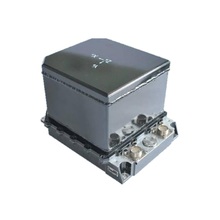Small-sized Unit for Measuring Angular Velocity 2
- Purpose: Measuring the integrals of the absolute angular velocity vector projections of the spacecraft on the six measuring axes of the instrument connected with the orthogonal instrument system of coordinates.
- Year of release: 2019
- Guaranteed service life (years): 19
- Estimated production / delivery time (months): 18
- Flight qualification of the product: Yes
- Brief history of flight qualification: Upgrade of small-sized unit for measuring angular velocity with maintenance of flight qualification is in progress.
- Possibility to adapt the product to customer requirements: Yes
| Parameter | Value |
|---|---|
| Measured angular velocity range | ±4/s (Rough) ±2◦/s (Precise) |
| Output information impulse value | 0,06..0,1 arc second (Rough) 0,03..0,05 arc second (Precise) |
| Certified zero signal value independent of overload | ±610 arc second/с (Rough) ±60 arc second/с (Precise) |
| Random deviation of the zero signal at startup from the certified value | ±16 arc second/с (Rough) ±3 arc second/с (Precise) |
| Noise component of the output signal in Precise mode | ±0,15 arc second |
| Time of formation of Precise mode after switching on the device at the base temperature of +20 °С | Not more than 30 min |
| Power supply voltage | ±27 V |
| Energy consumption | Up to 52 W |
| Weight | 6,1±0,2 kg |
An upgraded version for KIND34-040. The small-size device for measuring the angular velocity is designed to measure the integrals of the absolute angular velocity vector projections of the spacecraft when operating in the orbital section of the spacecraft as part of the spacecraft control system. The instrument is designed as a free-form inertial block, which uses small sensitive elements of DNG type. The device provides operation in rough and precise operation modes. Rough mode allows to carry out measurements with less accuracy, but in a larger range immediately after switching on the IR. The device has 6 measuring channels, the sensitivity axes of which are located in pairs along the axes of the orthogonal coordinate system. The failure of any of the IR (DNG) of the device does not affect the purposes of its intended use.
Remark
Development phase.
Please note that this site is for informational purposes only and under no circumstances is not a public offer determined by the provisions of the Part 2 Article 437 of the Civil code of the Russian Federation.
Information on this site may be changed or supplemented.







